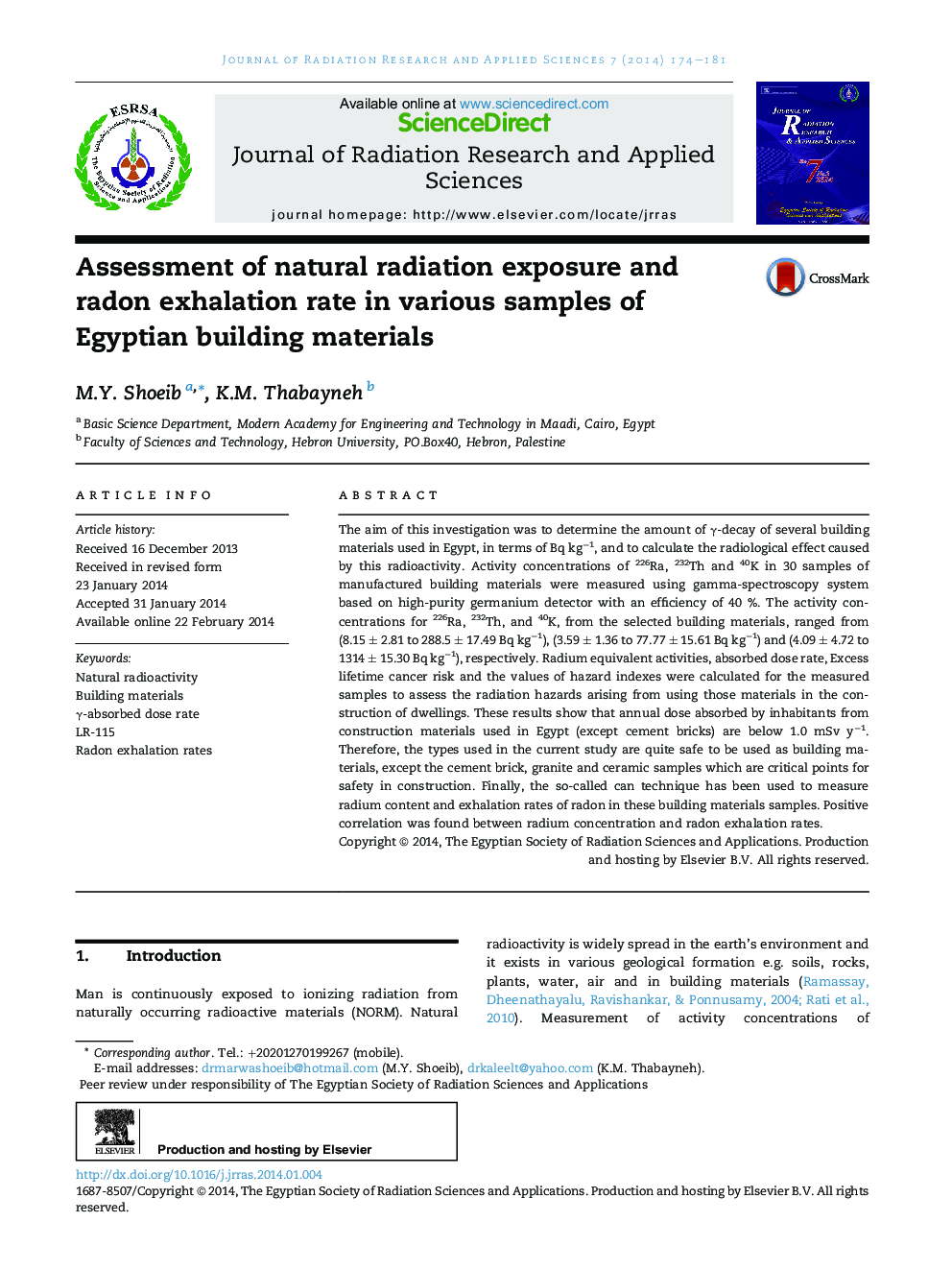| Article ID | Journal | Published Year | Pages | File Type |
|---|---|---|---|---|
| 1570330 | Journal of Radiation Research and Applied Sciences | 2014 | 8 Pages |
The aim of this investigation was to determine the amount of γ-decay of several building materials used in Egypt, in terms of Bq kg−1, and to calculate the radiological effect caused by this radioactivity. Activity concentrations of 226Ra, 232Th and 40K in 30 samples of manufactured building materials were measured using gamma-spectroscopy system based on high-purity germanium detector with an efficiency of 40 %. The activity concentrations for 226Ra, 232Th, and 40K, from the selected building materials, ranged from (8.15 ± 2.81 to 288.5 ± 17.49 Bq kg−1), (3.59 ± 1.36 to 77.77 ± 15.61 Bq kg−1) and (4.09 ± 4.72 to 1314 ± 15.30 Bq kg−1), respectively. Radium equivalent activities, absorbed dose rate, Excess lifetime cancer risk and the values of hazard indexes were calculated for the measured samples to assess the radiation hazards arising from using those materials in the construction of dwellings. These results show that annual dose absorbed by inhabitants from construction materials used in Egypt (except cement bricks) are below 1.0 mSv y−1. Therefore, the types used in the current study are quite safe to be used as building materials, except the cement brick, granite and ceramic samples which are critical points for safety in construction. Finally, the so-called can technique has been used to measure radium content and exhalation rates of radon in these building materials samples. Positive correlation was found between radium concentration and radon exhalation rates.
